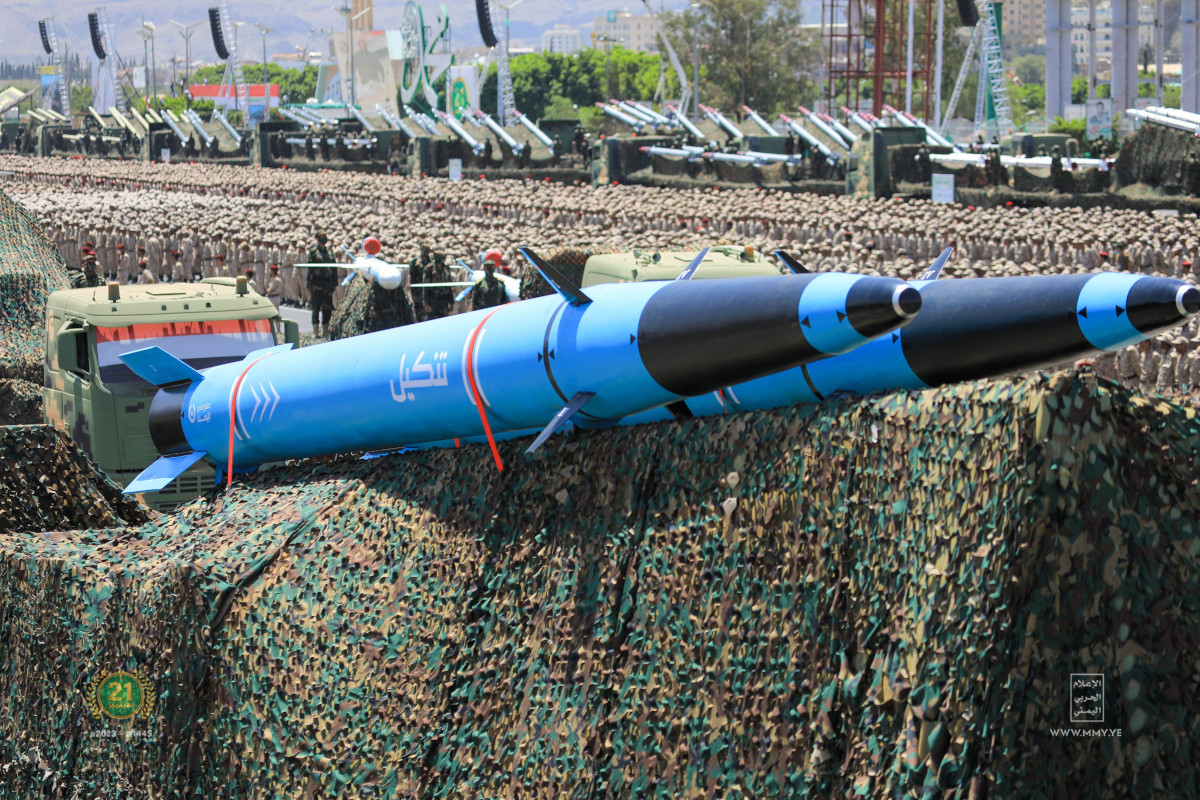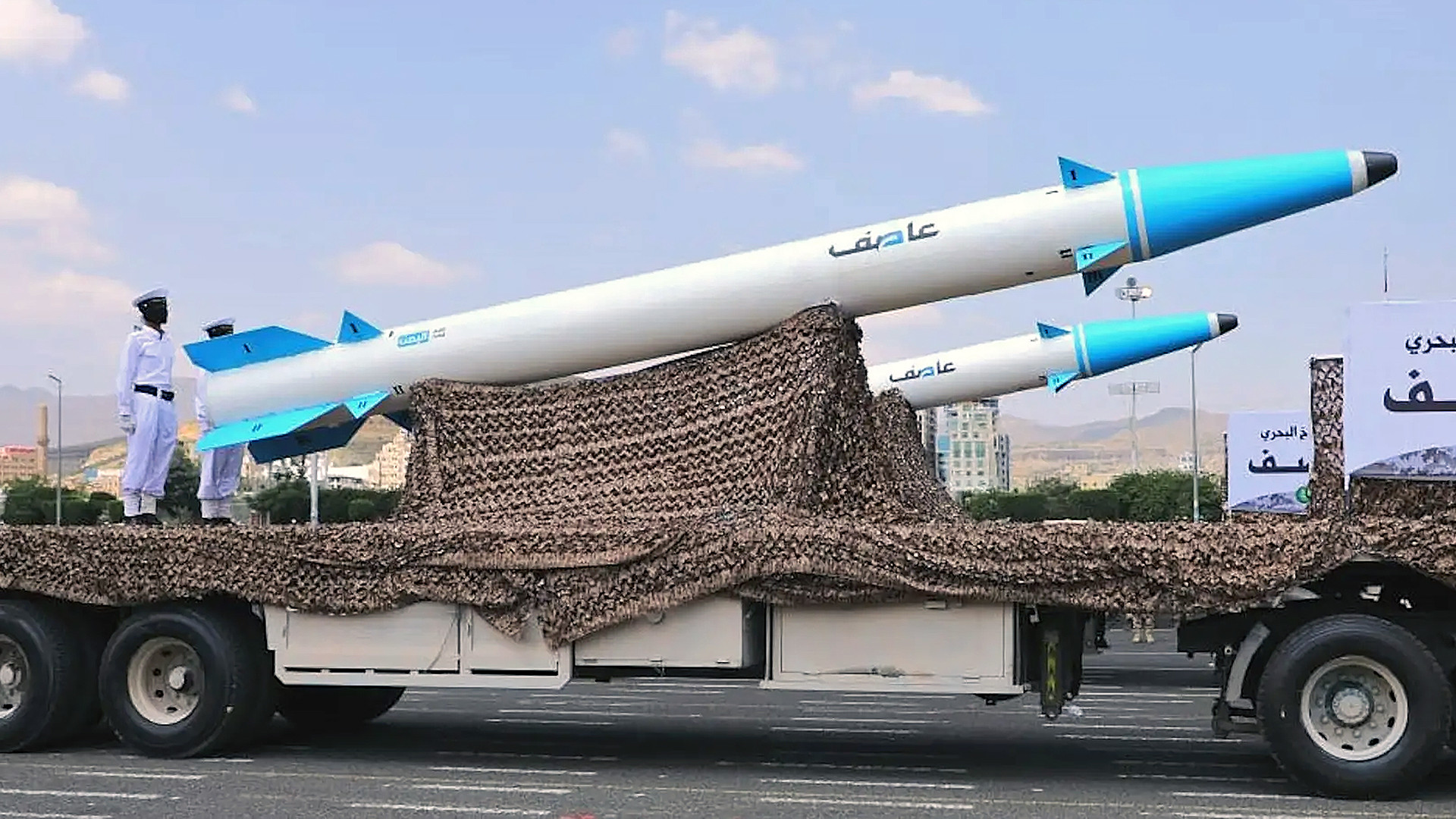The U.S. launched a preemptive strike against Houthi targets in Yemen early Tuesday morning Yemen time, destroying four anti-ship ballistic missiles being prepared for launch, a U.S. defense official told The War Zone. This is the first time the U.S. has launched what a second U.S. official called an “imminent self-defense strike” against Houthi missiles being prepared to launch. The first official, speaking on condition of anonymity to discuss operational details, declined to say how those strikes were carried out, citing operational security concerns.
“These missiles were prepared to launch from Houthi-controlled areas of Yemen and presented an imminent threat to both merchant and U.S. Navy ships in the region,” the official told us. You can read more about the Houthi anti-ship arsenal in our story here.

Carrying out a preemptive strikes against Houthi missiles in a persistent manner is a challenging feat. From our story about that:
“Having the U.S. military strike targets in Yemen sounds easy, and it wouldn’t be hard to do operationally, but the escalation that could follow could pose much more challenging tactical problems. Giving the Houthis a ‘bloody nose’ is very different than actually stopping or even significantly curbing their ability to launch anti-ship attacks. Preempting anti-ship missile and drone attacks would require a large, costly, resource-sucking, open-ended operation. This would include persistent intelligence gathering across a very broad area, as well as strike assets at the ready to hit time-sensitive targets based on that real time intelligence. Is the United States prepared to see that through and to what end?”
And from a more recent post about America’s first strikes on Houthi targets in Yemen:
“Still, it must be highlighted that attempting to directly stop the Houthi missile and drone attacks on shipping in the Red Sea and Gulf of Aden military would be extremely resource intensive. While space-based infrared warning satellites would have detected the locations of anti-ship ballistic and most cruise missile launches — with many other intelligence capabilities gaining valuable information on these operations in recent weeks, as well — and documenting these patterns of operations would be critical to stopping launches before they occur, actually doing this would be a huge challenge. It would require a far more elaborate surveillance and reconnaissance enterprise to be persistently deployed over large swathes of Yemeni coastline and inland areas. This would need to be paired with assets at the ready capable of time-sensitive strikes. They would need to hit the launchers before firing. Considering the Houthis have years of experience fighting against Saudi Arabia and their Arab coalition, they have dispersed their capabilities so they cannot be easily destroyed and know that firing from unpredictable locations and moving the weapons themselves around constantly is key to surviving. This makes eliminating them very challenging.
That being said, degrading the Houthis ability to target ships in other ways, like striking known radar systems and command and control nodes, could help reduce their ability to launch attacks but it will not eliminate it. Not even close.”
The strike on the Houthi missiles followed a Houthi attack Monday when an anti-ship ballistic missile struck the U.S.-owned bulk cargo ship M/V Gibraltar Eagle, the official said.

The Houthis also launched an attack today at about 1:45 p.m. local time, striking the M/V Zografia, a Maltese-flagged bulk carrier. The ship is reported seaworthy and continued its Red Sea transit, the official said.
The U.S. previously struck a Houthi radar site with a Tomahawk Land Attack Missile fired by the Arleigh Burke class guided missile destroyer USS Carney on Jan. 13. That came after U.S. and U.K. aircraft, surface ship and submarine attacks on more than 60 targets hit at 28 sites in Houthi-controlled Yemen on Jan. 12.
This is a developing story. We will update it when new information becomes available.
Update: 1:25 PM Eastern –
The Houthis released a statement on today’s strike against the M/V Zografia:
“The naval forces of the Yemeni Armed Forces, with the help of God Almighty, carried out a targeting operation against the ship ‘[Zografia],’ which was heading to the ports of occupied Palestine, with a number of suitable naval missiles, and the hit was direct. The targeting operation came after the ship’s crew rejected warning calls, including fiery warning messages. The Yemeni armed forces will continue to implement the decision to prevent Israeli navigation or those associated with the Israeli enemy in the Red and Arab Bahrain until the aggression is stopped and the siege on the steadfast Palestinian people in the Gaza Strip is lifted. The Yemeni Armed Forces continue to take all defensive and offensive measures within the legitimate right to defend dear Yemen and in confirmation of continued practical solidarity with the oppressed Palestinian people.”
Contact the author: howard@thewarzone.com
